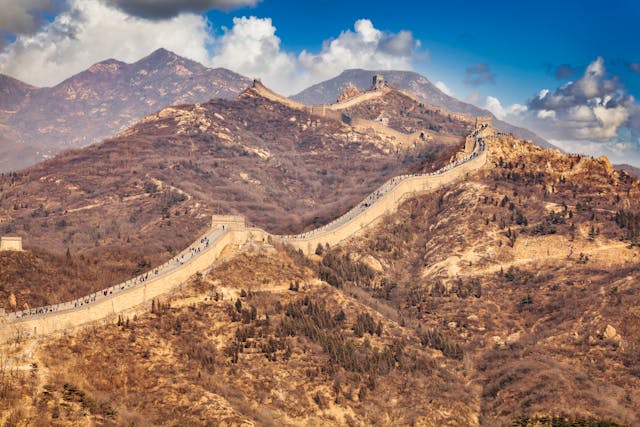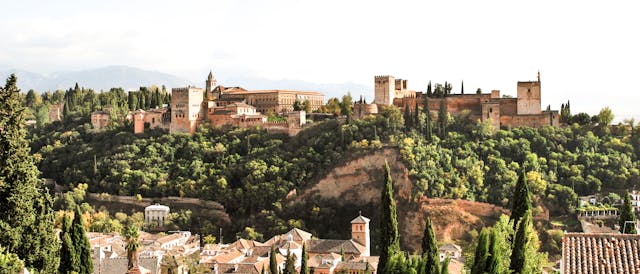Iconic Landmarks You Must See Before You Die
There are certain landmarks around the world that not only define their locations but also symbolize human achievement, natural beauty, and cultural significance. Visiting these iconic sites is a dream for many, offering a chance to connect with history, marvel at engineering feats, or simply soak in breathtaking landscapes. Here’s a list of iconic landmarks that should be on every traveler’s bucket list.

The Great Wall of China, China
One of the most recognizable structures in the world, the Great Wall of China stretches over 13,000 miles. Originally built to protect Chinese states from invaders, the Wall is a symbol of resilience and perseverance. Whether you're hiking its rugged paths or marveling at its sheer scale, it’s an awe-inspiring destination.
The Eiffel Tower, France
Located in Paris, the Eiffel Tower is a global icon of love and romance. Standing 324 meters tall, this iron lattice tower offers panoramic views of the city and is a must-see, especially at night when it sparkles. Constructed for the 1889 World’s Fair, it’s a masterpiece of architecture and engineering.
Machu Picchu, Peru
Machu Picchu is a 14th-century Inca city nestled in the Andes mountains of Peru. Often referred to as the "Lost City of the Incas," it’s one of the most mystical and well-preserved archaeological sites in the world. The trek along the Inca Trail is as thrilling as the destination itself.
The Pyramids of Giza, Egypt
The Great Pyramid of Giza, one of the Seven Wonders of the Ancient World, is an incredible testament to ancient Egyptian civilization. Standing for over 4,000 years, these pyramids, along with the Sphinx, remain an awe-inspiring example of architectural mastery and mystique.
The Colosseum, Italy
Located in the heart of Rome, the Colosseum is a monument to Roman engineering and ancient entertainment. Once the site of gladiatorial combat and public spectacles, this ancient amphitheater now draws millions of visitors each year who come to admire its grandeur and explore its history.
The Taj Mahal, India
The Taj Mahal in Agra, India, is one of the most beautiful and emotionally powerful landmarks in the world. Built by Emperor Shah Jahan in memory of his wife Mumtaz Mahal, the white marble mausoleum is a symbol of eternal love and a UNESCO World Heritage Site.
The Grand Canyon, USA
One of nature's greatest wonders, the Grand Canyon is a vast, rugged gorge carved by the Colorado River in Arizona. Its stunning layers of red rock and expansive vistas leave visitors in awe, offering some of the most spectacular natural scenery in the world.
The Great Barrier Reef, Australia
The Great Barrier Reef is the world’s largest coral reef system, stretching over 2,300 kilometers along the coast of Queensland, Australia. It's a paradise for divers and marine life enthusiasts, showcasing vibrant coral formations and a wealth of aquatic species.
The Statue of Liberty, USA
A gift from France, the Statue of Liberty is a symbol of freedom, democracy, and hope. Standing on Liberty Island in New York Harbor, this colossal figure has welcomed millions of immigrants to the United States and remains one of the most iconic landmarks in the world.
Petra, Jordan
Petra is an ancient city carved into rose-red sandstone cliffs in southern Jordan. Known as the "Rose City," it’s renowned for its breathtaking rock-cut architecture and water conduit system. As one of the most famous archaeological sites in the world, Petra is often described as one of the greatest wonders of human ingenuity.
Mount Everest, Nepal/Tibet
The highest peak on Earth, Mount Everest attracts mountaineers, trekkers, and adventurers from across the globe. While not everyone can summit the mountain, a trek to the Everest Base Camp offers breathtaking views and a chance to experience the spiritual significance of the region.
Christ the Redeemer, Brazil
Christ the Redeemer, the giant statue of Jesus Christ in Rio de Janeiro, stands as a powerful symbol of Christianity. Overlooking the city from the top of Corcovado Mountain, it offers not only a spiritual experience but also stunning views of Rio’s beaches, mountains, and bustling cityscape.
Angkor Wat, Cambodia
The temple complex of Angkor Wat is the largest religious monument in the world and one of the most important cultural sites in Southeast Asia. Originally constructed as a Hindu temple, it later became a Buddhist site. It’s a marvel of ancient architecture and sculpture, with expansive galleries, intricate carvings, and a unique fusion of spiritual and artistic expression.
The Louvre Museum, France
Home to thousands of works of art, including the Mona Lisa and the Venus de Milo, the Louvre Museum in Paris is the world’s largest and most visited art museum. Its grand glass pyramid entrance and extensive collections make it a must-visit for art lovers and history buffs alike.
Mount Fuji, Japan
Mount Fuji, Japan’s highest peak, is a sacred symbol and a natural wonder. Its symmetrical beauty has inspired countless artists and pilgrims. Whether climbing to the summit or simply viewing it from below, Mount Fuji offers a serene experience steeped in Japanese tradition.
Stonehenge, United Kingdom
Stonehenge is an ancient stone circle located in Wiltshire, England. The purpose of this mysterious landmark remains unclear, but its intricate arrangement of massive stones and alignment with celestial events continues to fascinate historians and archaeologists alike. It’s a must-see for anyone interested in ancient history and mystery.
The Alhambra, Spain
The Alhambra in Granada is a spectacular fortress and palace complex that showcases the art and architecture of the Islamic Golden Age in Spain. With its intricate tilework, beautiful gardens, and serene courtyards, it’s a stunning example of medieval Islamic architecture.
The Northern Lights, Norway/Finland/Iceland
The Northern Lights, or Aurora Borealis, is a natural light display best seen in the polar regions. Countries like Norway, Finland, and Iceland offer some of the best vantage points to witness this breathtaking phenomenon, where vibrant greens and purples swirl across the night sky.

The Louvre Pyramid, France
While technically part of the Louvre Museum, the Louvre Pyramid in Paris deserves its own mention. This glass and metal pyramid entrance, designed by architect I. M. Pei, has become an iconic structure in its own right and is often photographed by visitors.
The Parthenon, Greece
The Parthenon, perched atop Athens, is a symbol of ancient Greek civilization and a testament to the architectural genius of the ancient world. Built in the 5th century BCE, the Parthenon remains an iconic representation of Western culture and democracy.
Final Thoughts
From architectural marvels to natural wonders, these iconic landmarks represent the beauty, creativity, and resilience of human and natural history. Traveling to these locations not only provides an opportunity to experience something truly extraordinary but also connects us to the stories, cultures, and history that have shaped our world.












